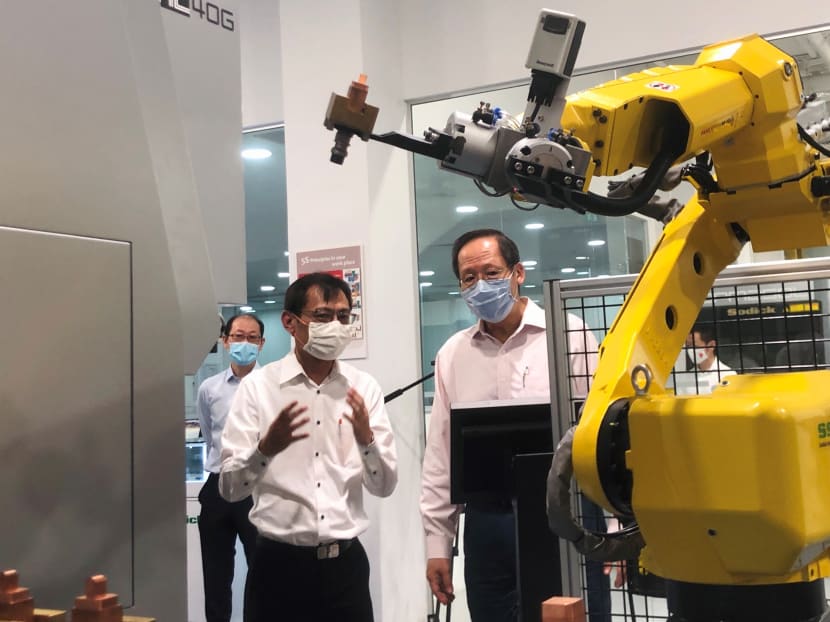Safety guidelines launched for firms handling flammable fine powders
SINGAPORE — Factories handling fine powders, which are flammable and hazardous, should place a cap on the amount of such material stored in a facility.

Second Minister for Trade and Industry Tan See Leng (right) being briefed by Sodick Singapore general manager Daniel Tan on the manufacturing firm’s processes at its technology centre in the Jurong Innovation District.
- The guidelines lay out the best practices for the safe set-up, operations and maintenance of additive manufacturing facilities
- They also specify how combustible and hazardous fine powders should be handled
- Second Minister for Trade and Industry Tan See Leng said these guidelines are specific to additive manufacturing
- He added that they were not created as a result of the fatal fire and explosion at Tuas last month
SINGAPORE — Factories handling fine powders, which are flammable and hazardous, should place a cap on the amount of such material stored in a facility.
They should also eliminate potential sources of ignition in powder handling areas, such as laying down anti-static mats to prevent static sparks from lighting up the combustible powder.
These are among a set of guidelines issued by the Government on Wednesday (March 31), laying out best practices for the safe set-up, operations and maintenance of additive manufacturing facilities, which often use fine powders in processes such as 3D printing.
The guidelines also specify how an additive manufacturing facility should be designed, the proper use of personal protective equipment and how hazardous waste should be properly handled or discarded to prevent pollution.
The industry guidelines come a month after a fatal fire and explosion broke out in an industrial site at Tuas, although a government official stressed that these guidelines have been in development for years and were not created as a reaction to the accident.
“This is mainly focused on metallic powders, polymers, as well as ceramics,” said Second Minister for Trade and Industry Tan See Leng, who launched the guidelines at a visit to Sodick Singapore Technology Centre in the Jurong Innovation District.
While preliminary investigations have identified combustible potato starch powder as the source of the recent explosion at Tuas, Dr Tan said these guidelines were created specifically for the three materials commonly used in the additive manufacturing industry.
He added that there are some international safety standards for this industry, but these have had to be adapted to the local context, where factories are often built vertically rather than horizontally due to Singapore’s land constraints.
The authorities will wait for the independent inquiry into the Tuas accident to be completed before reviewing whether these guidelines can be expanded to cover other materials and industries, or if different standards need to be developed, he added.
Following the launch on Wednesday, Dr Tan said the different government agencies will begin encouraging companies in the manufacturing industries to adopt these guidelines, which will be continually reviewed as the industry evolves.
Based on the feedback received, the guidelines can then be developed into a code of practice or official standards that have to be adopted across the industry.
1,200 NEW JOBS IN JURONG INNOVATION DISTRICT
Asked for an update on the development of the Jurong Innovation District, Dr Tan said some 1,200 new jobs will be created in the advanced manufacturing sector over the next 18 months.
Another 3,300 jobs will be relocated to the district when factories move their operations into the area, he said.
Companies that are setting up operations in the area include Japanese manufacturers Konica Minolta and Shimano, as well as local urban and infrastructure consulting firm Surbana Jurong.
South Korean conglomerate Hyundai has also announced that it will set up an innovation centre that will house an electric vehicle factory at the Jurong Innovation District and expects construction to complete by the end of next year.








